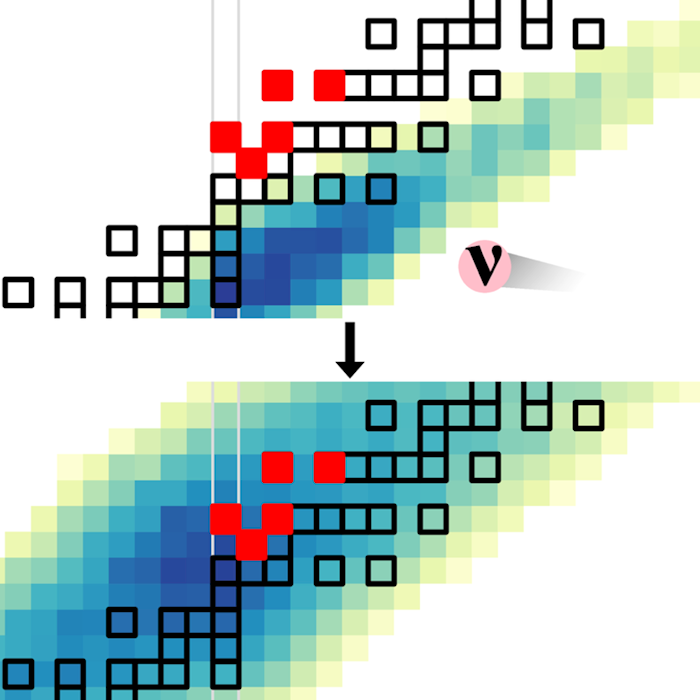Reviewed by Lexie CornerMay 14 2024
Scientists from GSI Helmholtzzentrum für Schwerionenforschung, Technische Universität Darmstadt, and Max Planck Institute for Astrophysics proposed a new theory named νr-process in the journal Physical Review Letters. This theory explains the creation of rare isotopes, p-nuclei, through neutrino absorption reactions on neutron-rich material ejected during astrophysical explosions.
 Section of a nuclide map. The p-nuclei are marked in red. Image Credit: Zewei Xiong
Section of a nuclide map. The p-nuclei are marked in red. Image Credit: Zewei Xiong
The theoretical proposal could potentially resolve a persistent mystery surrounding the generation of a set of uncommon isotopes found in the solar system, known as p-nuclei, whose origins remain elusive.
Massive stars undergo fusion processes that yield nuclei up to iron and nickel. Beyond them, slow or fast neutron capture processes create the majority of stable heavy nuclei, including lead and gold.
Numerous nucleosynthesis methods have been proposed for the synthesis of the remaining ones, which lack neutrons. However, the high abundances of 92,94Mo, 96,98Ru, and 92Nb in the early solar system have proven difficult to explain.
The vr-process can simultaneously produce all those nuclei because neutrinos catalyze a sequence of capture reactions.
In astrophysical explosions, the νr-process is active in neutron-rich outflows that initially comprise nuclei and neutrons near iron and nickel at high temperatures. A series of neutron captures and weak interaction processes cause lighter nuclei to become heavier as the material's temperature drops. However, in the νr-process, the weak reactions are neutrino absorption processes, as opposed to beta-decays in the fast neutron capture process.
After the depletion of free neutrons, additional neutrino absorption reactions occur, transforming neutrons bound within nuclei into protons. This process propels the generated nuclei closer to, and sometimes beyond, the beta-stability line.
The neutrinos' energy is sufficient to excite nuclei into states that decay into protons, neutrons, and alpha particles. The heavier nuclei absorb the released particles. This sets off a sequence of capture reactions mediated by neutrinos and ultimately decides the elemental abundances produced by the vr-process. Neutrinos can create otherwise unreachable neutron-deficient nuclei in this way.
Our finding opens a new possibility to explain the origin of p-nuclei via neutrino absorption reactions on nuclei.
Zewei Xiong, Scientist and Corresponding Author, Nuclear Astrophysics and Structure Department, GSI Helmholtzzentrum für Schwerionenforschung
It is still necessary to identify the kind of stellar explosion that gives rise to the vr-process after establishing the sequence of reactions that drives it. The authors of the publication suggested that the νr-process functions in material expelled from environments with high magnetic fields, including magnetars, collapsars, or magneto-rotational supernovae.
As a result of this proposal, astronomers are now searching for the right circumstances, and a preliminary study has already shown that magnetically powered ejecta can meet these requirements.
Understanding neutrino reactions and neutron-capture reactions on nuclei at both sides of the beta-stability line is necessary for the νr-process. Thanks to the GSI/FAIR facility's unique storage ring capabilities, measuring the pertinent reactions will now be feasible.
Journal Reference:
Xiong, Z., et al. (2024) Production of p Nuclei from r -Process Seeds: The νr Process. Physical Review Letters. https://doi.org/10.1103/physrevlett.132.192701.